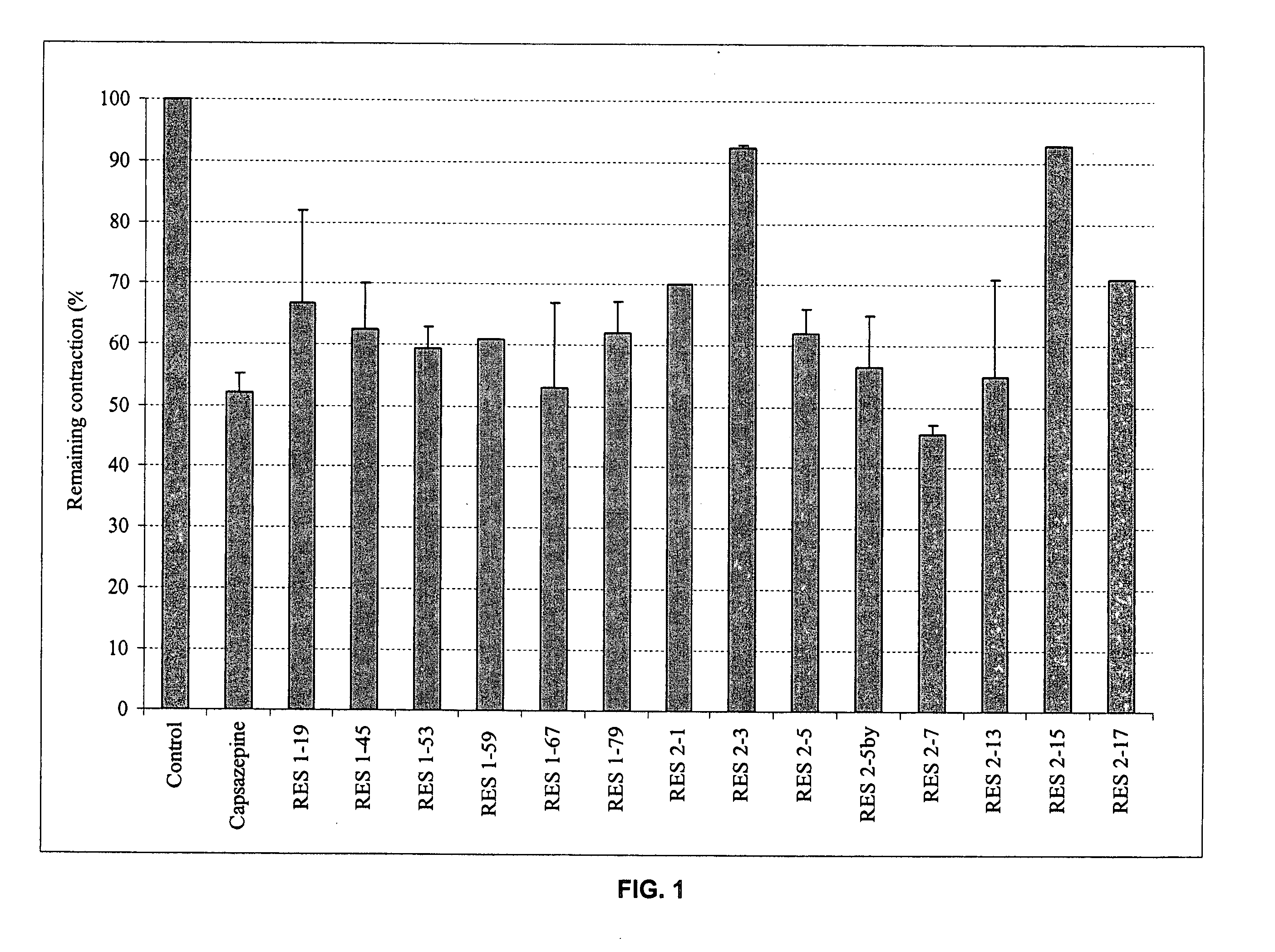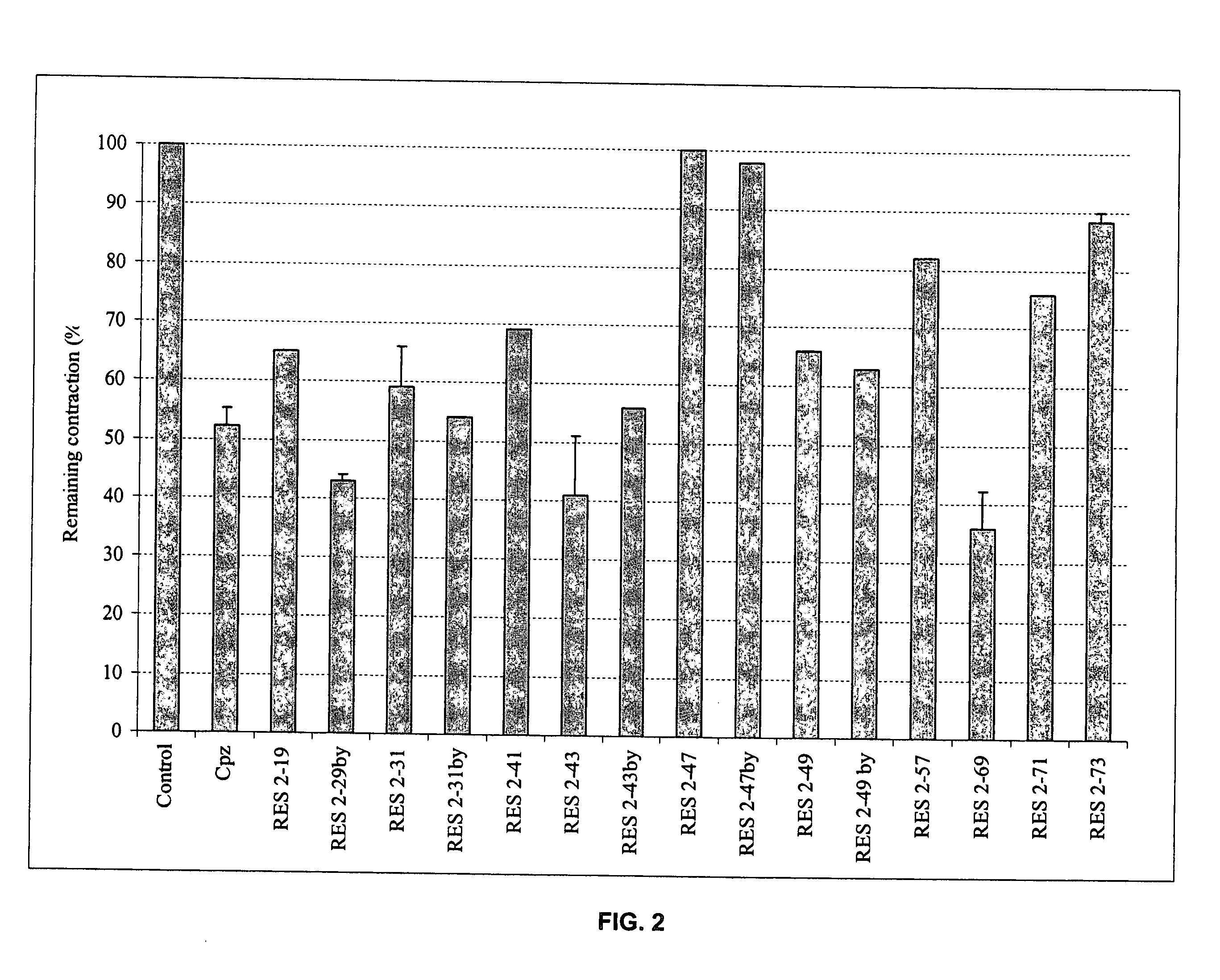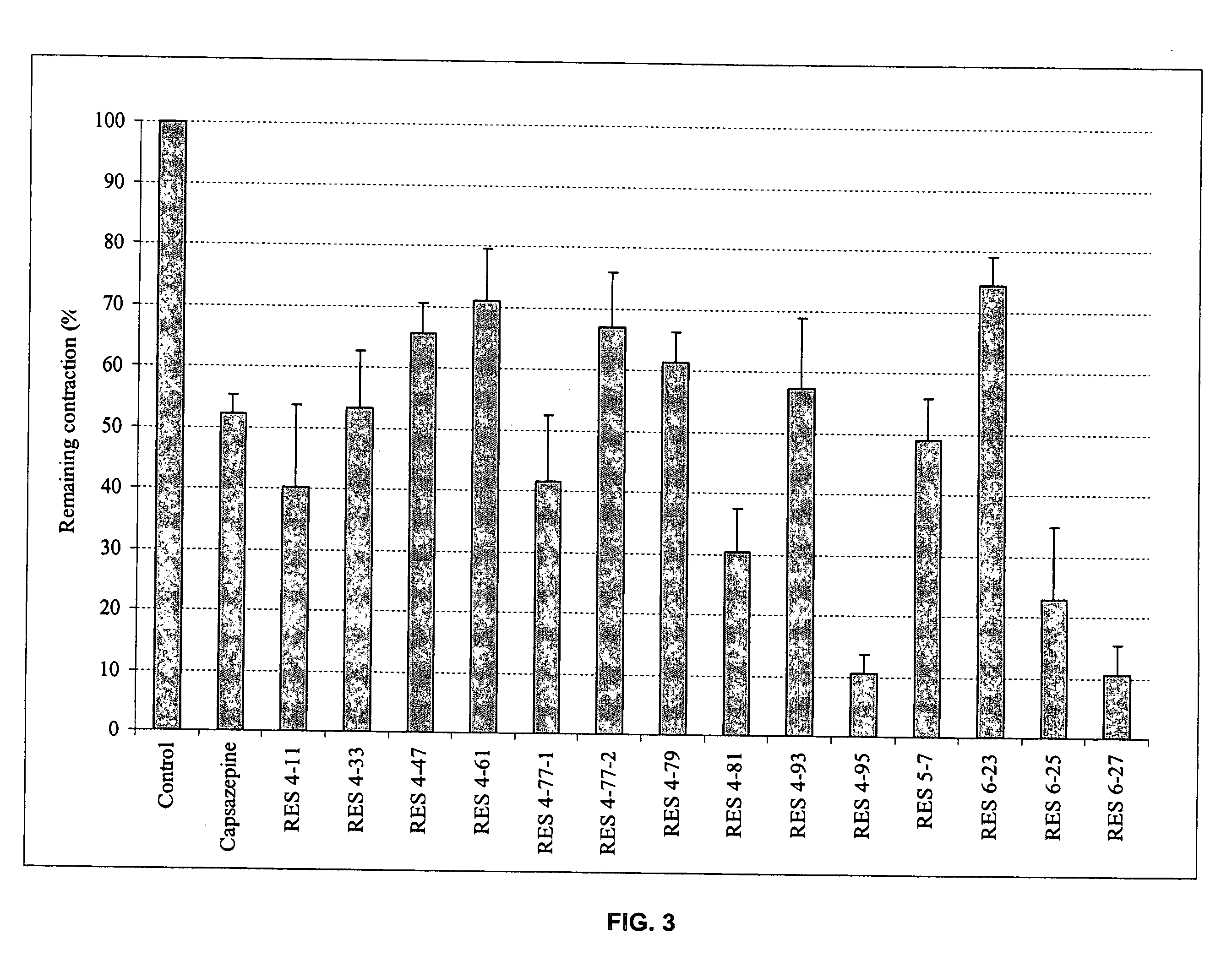Bronchorelaxing compounds
a technology of bronchoconstricting compounds and compounds, applied in the field of bronchoconstricting compounds, can solve the problems of insufficient availability of means for treating or preventing bronchoconstricting in many respects, and achieve the effects of fast but weak relaxation of small human bronchi, rapid development, and strong but slowly developing relaxation
- Summary
- Abstract
- Description
- Claims
- Application Information
AI Technical Summary
Benefits of technology
Problems solved by technology
Method used
Image
Examples
example 1
Synthesis of 1,3,4,5-tetrahydro-2H-2-benzazepine-2-carbothioamides and 1,2,4,5-tetrahydro-3H-3-benzazepine-3-carbothioamides
[0068] 1,3,4,5-Tetrahydro-2H-2-benzazepine-2-carbothioamides and 1,2,4,5-tetrahydro-3H-3-benzazepine-3-carbothioamides of the invention were synthesized starting from commercially available 1- or 2-tetralones. The tetralones were converted to the corresponding benzazepinones via a Schmidt reaction. Benzazepinones were then reduced to the corresponding benzazepines with borane. In some cases, the aromatic ring of benzazepines was chlorinated using sulfuryl chloride. The methoxyarylethers were cleaved under reflux in concentrated hydrobromic acid. The protonated benzazepines were coupled to isothiocyanates, which were synthesized from the corresponding amines by reaction with thiophosgene, to give 1,3,4,5-tetrahydro-2H-2-benzazepine-2-carbothioamides or 1,2,4,5-tetrahydro-3H-3-benzazepine-3-carbothioamides. The reaction paths are illustrated in Reaction Schemes ...
example 2
Synthesis of 3,4-dihydroisoquinoline-2(1H)-carbothioamides
[0069] 3,4-Dihydroisoquinoline-2(1H)-carbothioamides of the invention were synthesized starting from 2-(methoxyphenyl)-ethylamines. The amines were cyclisized with modified Pictet-Spengler conditions and Boc-protected to simplify purification. The cyclic amines were chlorinated in some cases using sulfuryl chloride and Boc-protected to simplify purification. The methoxyarylethers were cleaved under reflux in concentrated hydrobromic acid, which also cleaved the Boc-group. The protonated amines were coupled to isothiocyanates synthesized from the corresponding amines by reaction with thiophosgene or 1,1′thiocarbonyldiimidazole to give 3,4-dihydroisoquinoline-2(1H)-carbothioamides. The reaction paths are illustrated in Reaction Scheme C.
example 2a
Synthesis of amino-3,4-dihydroisoquinoline-2(1H)-carbothioamides
[0070] Amino-3,4-dihydroisoquinoline-2(1H)-carbothioamides of the invention were synthesized from 1,2,3,4-tetrahydroisoquinoline by acetylation followed by nitration of the aromatic ring with acetic anhydride and a mixture of nitric and sulfuric acid, respectively. The nitro group was catalytically hydrogenated and the amides hydrolyzed with hydrobromid acid. The resulting amines were coupled to isothiocyanates obtained from the corresponding amines by reaction with thiophosgene or 1,1′-thiocarbonyldiimidazole. The reaction path is illustrated in Reaction Scheme C1.
PUM
| Property | Measurement | Unit |
|---|---|---|
| particle size | aaaaa | aaaaa |
| temperature | aaaaa | aaaaa |
| temperature | aaaaa | aaaaa |
Abstract
Description
Claims
Application Information
 Login to View More
Login to View More - R&D
- Intellectual Property
- Life Sciences
- Materials
- Tech Scout
- Unparalleled Data Quality
- Higher Quality Content
- 60% Fewer Hallucinations
Browse by: Latest US Patents, China's latest patents, Technical Efficacy Thesaurus, Application Domain, Technology Topic, Popular Technical Reports.
© 2025 PatSnap. All rights reserved.Legal|Privacy policy|Modern Slavery Act Transparency Statement|Sitemap|About US| Contact US: help@patsnap.com



